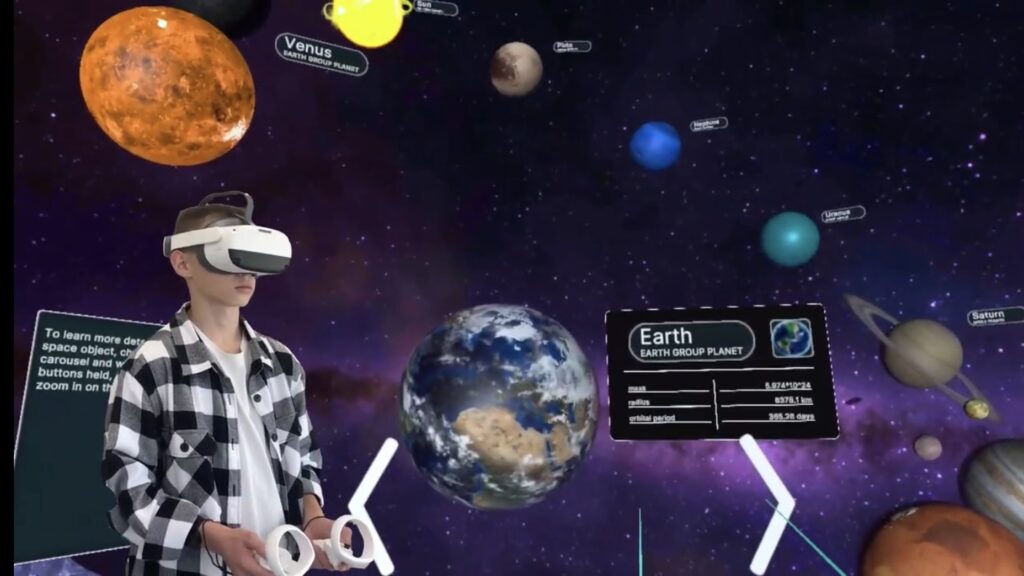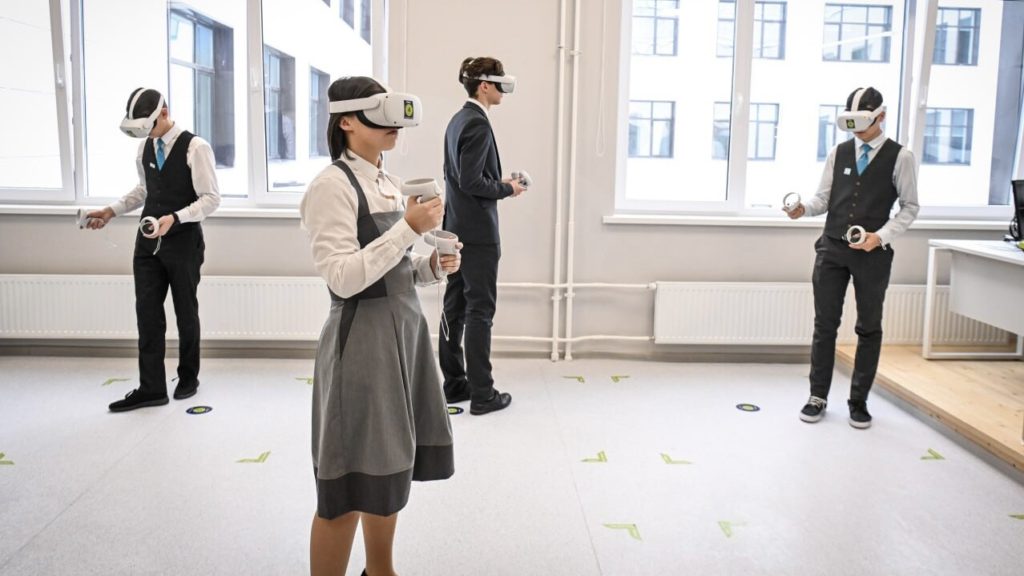

At XReady Lab, we often hear concerns from teachers when it comes to integrating virtual reality into the classroom:
Do these thoughts sound familiar? If so, you’re not alone. Many educators grapple with finding the right balance between engaging students and ensuring that learning remains the primary focus. Let’s explore this dilemma and share our perspective on where to draw the line between games with educational elements and educational simulations with game elements.
Games designed primarily for entertainment, with learning components woven into the gameplay, can quickly capture students’ attention through fun challenges and immersive storytelling. Platforms like Roblox are popular among children and host a variety of such games. For example:
Players navigate through environments while learning about pathogens and how diseases spread.
This game allows students to explore Mars, learning about space exploration and planetary science.
Players solve puzzles based on chemistry concepts to escape from a lab.
These games are engaging and can spark interest in scientific topics. However, there are some drawbacks to consider:
While these games can be excellent tools for sparking interest in a subject, they might be better suited for extracurricular use or at-home exploration rather than the classroom setting
On the other hand, educational simulations prioritize learning outcomes while incorporating interactive and engaging features to maintain student interest. This approach strikes a balance between education and engagement, ensuring that gameplay enhances rather than detracts from the core material.
Benefits of this approach include:
For teachers, this means providing structure and clarity, making it easier to guide students through the material while still allowing room for exploration. For students, the engaging elements add excitement to the learning process, keeping them curious and involved.
At XReady Lab, we believe in the power of immersive technology to transform education, but we also recognize the importance of aligning with educational goals. We focus on creating VR learning solutions that are both educational and engaging, ensuring that technology enhances the learning experience rather than distracting from it.
Our mission is to make complex scientific concepts accessible and exciting for students. By emphasizing accurate scientific simulations enriched with interactive elements, we cater to the learning needs of the alpha generation in today’s digital classrooms.
We understand that educators may have reservations about introducing VR into the classroom. Here are some common concerns and how we address them:
Safety:
Our simulations are designed with safety in mind, both physically and in terms of content. We provide guidance on appropriate usage to ensure a safe learning environment.
Gaming Addiction:

Since our focus is on education first, the engaging elements are there to support learning objectives, not to create addictive gameplay loops.
Curriculum Alignment:

Our programs align with international educational standards, making it straightforward to incorporate them into your lesson plans without extra hassle.
While we advocate for educational simulations with game elements in the classroom, we also recognize the value of games with educational elements. These games can be excellent for:
By guiding students toward content that complements their studies, teachers can harness the engaging power of games without compromising educational goals.
We invite educators to explore how our VR education platform can transform teaching and enrich students’ learning experiences. With our simulations, you can rest easy knowing that:
Ready to bring the future of education into your classroom?
Finding the right balance between games and education doesn’t have to be a challenge. By choosing educational simulations with game elements, teachers can provide immersive, interactive experiences that enhance learning while keeping educational objectives at the forefront.
At XReady Lab, we’re committed to supporting educators in this journey, providing tools that make learning both effective and enjoyable. Let’s embrace the exciting possibilities of virtual reality in the classroom while keeping our focus firmly on education.
Frequently Asked
We prodive VR biology, VR physics, and VR chemistry simulations. Please, check our catalog.
Please, fill the form to get demo labs for free.
Please contact our customer support service at support@xreadylab.com or book a call with the team to find out the conditions and book the VR class set up at your school.
Subscription to XReady Lab interactive VR labs. If you are a school, then you are also given access to the VR classroom system. VR class system helps you easily launch VR lessons for a large number of students, follow the experience of each student, as well as customise the content without developers.
We adhere to the world’s generally accepted recommendations and research. Our products are suitable for children from 12 years old.